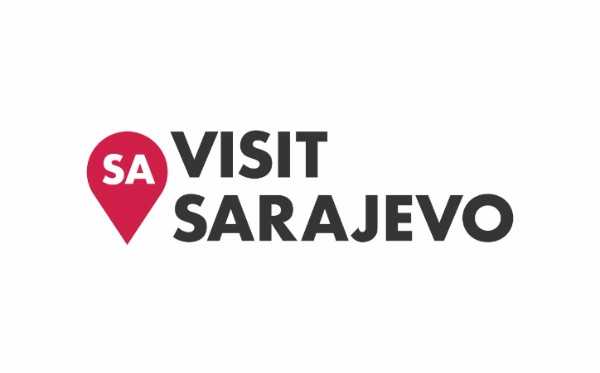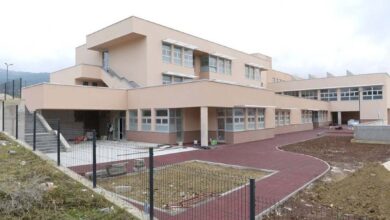This Ramadan visit Sarajevo – European Jerusalem
We know the saying that blessing (baraka) is in the journey. Real baraka of this truth can be experienced when choosing a special period of the year and a special place for a trip.
Ramadan is the most blessing month in the Islamic calendar and travel in it, the introduction of other nations, people and their customs is an exceptional opportunity for spiritual growth. 
If you have not yet had the opportunity to visit Bosnia and Herzegovina and its capital, we recommend that you do that during Ramadan because Sarajevo, specially Baščaršija – its oldest part, lives in a special way in Ramadan.
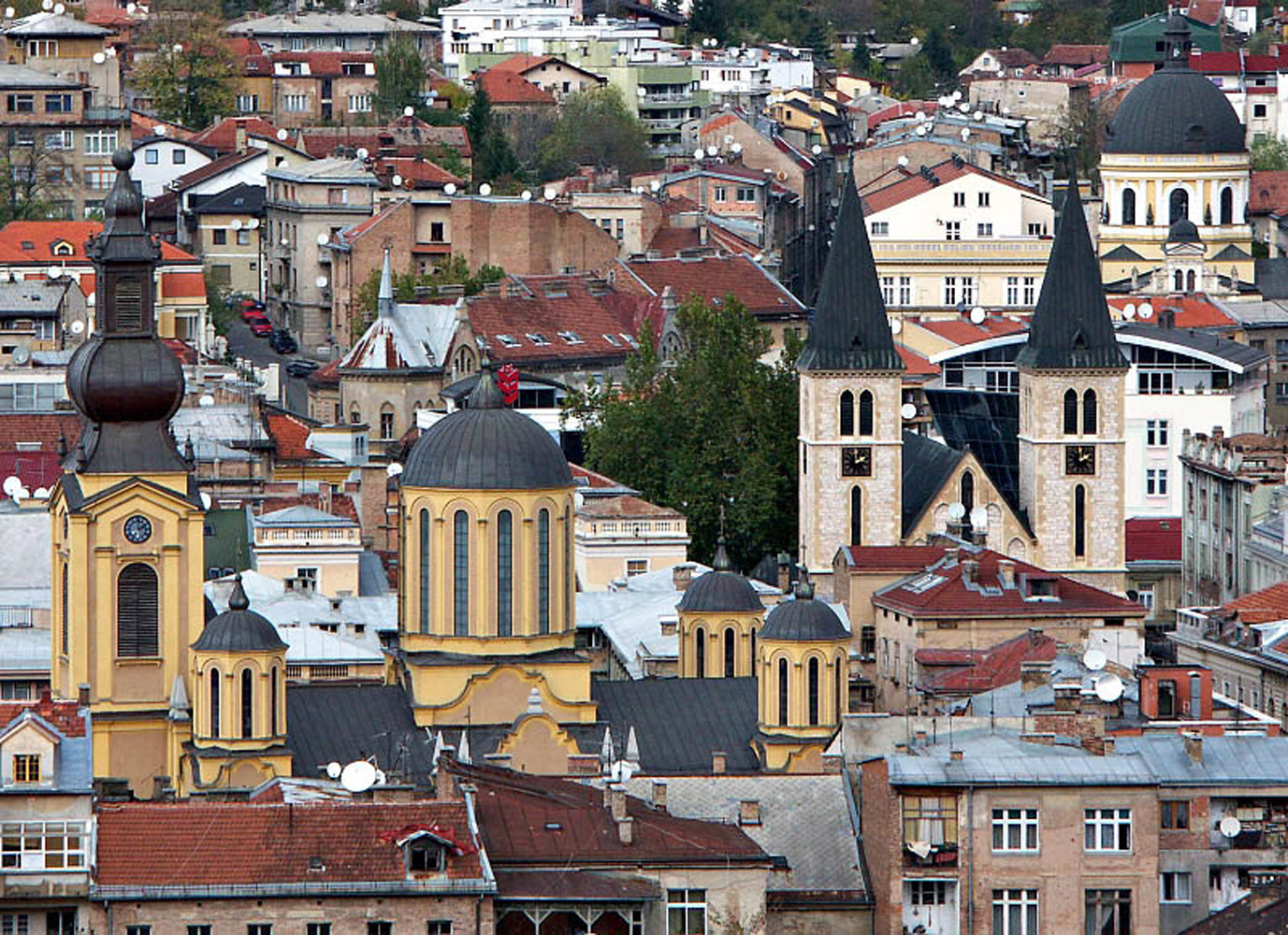
The narrow streets of Baščaršija, built in the Ottoman period, are interwoven with traditional shops, craft shops, restaurants, cafes, mosques, national monuments … Atmosphere smell of somun – traditional bread made for ramadana, iftar from the restaurants, noise of reading Holy Qur’an in mosques – a muqabala where muslims attend the yards mosque, teravih and a cannon from the Yellow tab that announces the end of the fasting …
Catholic cathedral, Orthodox church, synagogue and mosque
There are few major cities in Europe that heritage the culture of the four great monotheistic religions. Sarajevo is one of the few cities in the world where at the same time you can hear ezan (call to Muslims for prayer from the minaret of mosque), church bells from the Catholic cathedral and the Orthodox Church. Within one kilometer there are two synagogues (Sephardic and Ashkenazi), a large Catholic cathedral, an old Orthodox church built in 16th century and a large Orthodox church and dozens of mosques.
In addition to the rich architecture of Sarajevo, as well as Bosnia and Herzegovina, the history has preserved a multiethnic and multireligious life. Sarajevo become main topic in the world on June 28, 1914 when Austro-Hungarian prince throne Franz Ferdinand and his wife assassinated. It was a shot that marked the beginning of the First World War. In World War II, Bosnia and Herzegovina was under the occupation of the Independent State of Croatia, state that was part of Nazi Germany. Bosnians, already in the summer of 1941, a majority Muslim population rebelled against the killing of Jews, Roma and Serbs through the signing of El-Hidaje resolution. There have been numerous cases of hiding Jews in the houses of rich and prominent Bosniaks.
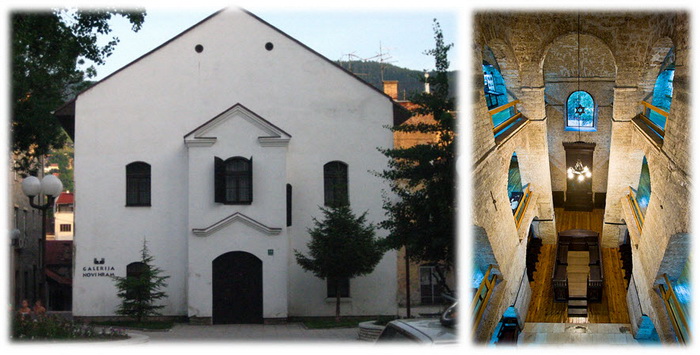
The rescue of Jews in occupied Sarajevo became an inspiration to the American Jews to sympathize with Muslims and, together with them, to fight against Islamophobia.
This picture shows Muslim women Zejneba Hardaga, who leads Jewish women Rivka Kavillo and her children in Sarajevo in 1941. As they walk together, Zejneba hides the yellow star on Rivka’s hand with her scarf, which is a sign of the recognition of the Jews. Zejnaba’s family accepted the Kavillo family to live with them at their house, as long as Josef Kavillo was not in situation to take wife and children on safe location. After that, Hardaga family protected Josef despite the fact that the Gestapo center was nearby, and despite warnings that anyone who hides the Jews would be killed. Later, Josef joined his family and they all survived the Second World War.
One of the most successful Sarajevo mayors and the designer of the Energoinvest industrial holding company that employed 50,000 people Emerik Blum was a Jew who survived the Nazi concentration camps.
In Sarajevo there is the largest Sefard graveyard in Europe, and Sarajevo Jews have preserved their language ladino – a mixture of Hebrew and Spanish.
These facts should be added to the story of the Sarajevo-based Hagadah Jewish book brought with them from Spain, which survived the Second World War and the brutal siege of Sarajevo when Fascism returned to the European land.
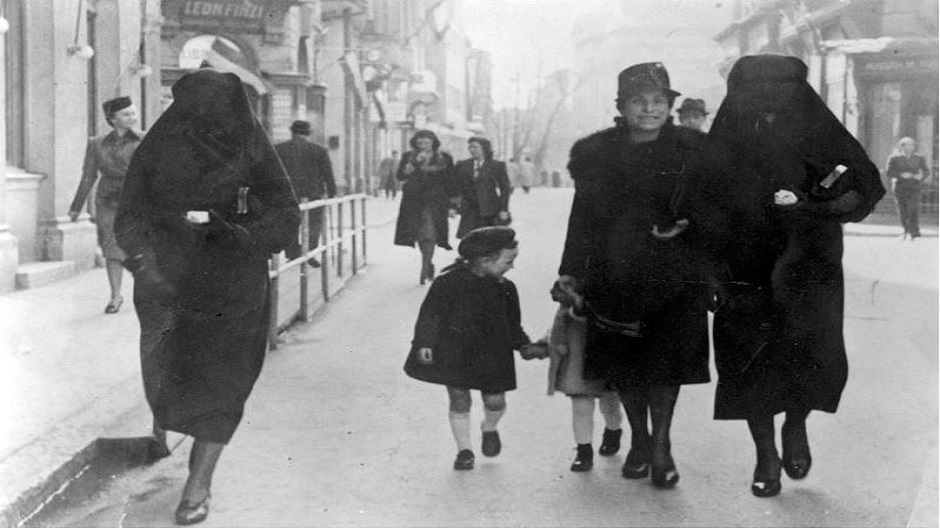
Interesting fact about one of the largest Orthodox temples in the Balkan is that inhabitants of Sarajevo started initiative for its building. The church was built in 1874 under the approval of Ottoman Sultan Abdulaziz. Although in last war Sarajevo was in the siege for 44 months, this church, as well as other religious facilities, has been preserved. It was on territory that controlled Army of Republic of Bosnia and Herzegovina.

The Catholic cathedral in Ferhadija Street was built in 1898, which represented the influence of the new Austro-Hungarian government that replaced four centuries of Ottoman rule. For over 40 years, the rule of the Austro-Hungarian monarchy in Bosnia and Herzegovina, over 100,000 people from different parts of Empire moved in Bosnia and Herzegovina. In this way, the Bosnian society got a new coloring by forming communities of Austrians, Germans, Czechs, Poles, Hungarians, Ukrainians, Russians, Slovaks and Jews Ashkenazi.

The largest mosque in Bosnia and Herzegovina, built during the Ottoman rule, is the Gazi Husrev-bey’s mosque in Old city of Baščaršija. It is square in shape, decorated with a dome of 13 meters in diameter, in a courtyard and a 26 meters high minaret. Bey’s mosque, as it is called in the people, was built in 1530. It is the first mosque in the world that received electric lighting in 1898.
Next to the mosque, the Clock Tower is the only one in the world that show lunar time.
Sarajevo old town has two synagogues. The first was built by the Jews of the Sephardi who escaped from Spain to the Ottoman Empire. Until the Second World War, one of the largest Jewish communities in the Balkan lived in Sarajevo.
The second synagogue was built by the Jews Ashkenazi who began to settle in Sarajevo after the Austro-Hungarian occupation of Bosnia and Herzegovina in 1878. In 1902, when it was built, it was the third largest synagogue in Europe.
It is located on the left bank of the Miljacka river between the bridges Drvenija and Ćumurija. The Czech architect Karl Parzik designed synagogue who gave a stamp to the urban development of Sarajevo during the Austro-Hungarian period. He also designed the City Hall, the National Museum, the building of the Faculty of Islamic Sciences and many other buildings in Sarajevo.

If you choose to visit Sarajevo this ramadan, or for summer holidays, you will surely enrich your life experience.
You will feel a unique Ramadan experience!
There are museums when you can see the development of civilization on the territory of Bosnia and Herzegovina from the prehistory to the end of the 20th century, from which museums are connected to the wartime years of the 90’s most interesting for tourists.
Sarajevo was a city marked at the beginning of the 20th century where started First World War, and at the end of the century it was the longest siege of the capital in the modern history.
In next articles, we will write about ramadan atmosphere in Sarajevo and Islamic art and architecture in this beautiful city.
#sarajevo_in_ramadan
Linkovi:
Author: Voloder Sanadin, webpage Akos.ba

